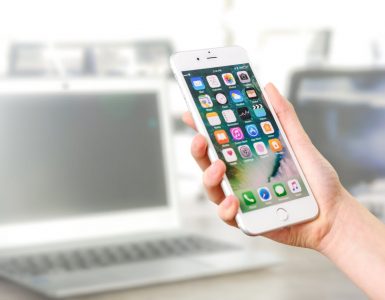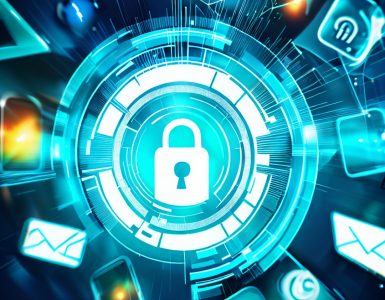Mobile apps and drones are two emerging technologies that are transforming the way we receive goods and services. Mobile apps are software applications designed to run on mobile devices such as smartphones and tablets, while drones are unmanned aerial vehicles that can be used for a variety of purposes.
Technology has played a significant role in the evolution of delivery services, from the development of the first postal services to the introduction of delivery trucks and vans. Mobile apps and drones represent the latest technological innovations in this field, offering new ways to streamline delivery processes, drone services and improve customer experiences.
The purpose of this article is to explore how mobile apps and drones are transforming delivery services. We will examine the different types of mobile apps and drones used in delivery services, the benefits they offer to delivery companies, and how they are changing the way we receive goods and services. By the end of this article, readers will gain a deeper understanding of the potential of mobile apps and drones in arial dron services, as well as the challenges and limitations that must be overcome to fully realize this potential.
The different types of mobile apps and drones used in delivery services
The use of mobile apps and drones in delivery services has opened up new possibilities for businesses to improve their operations and meet customer demands. Let’s take a closer look at the different types of mobile apps and drones used in this field.
Mobile apps
Delivery tracking apps: These apps allow customers to track their orders in real-time, providing them with updates on the status of their delivery, estimated delivery times, and other information. They also provide delivery companies with valuable data on delivery times, routes, and customer preferences.
Online marketplaces: These apps enable businesses to sell their products and services online, allowing customers to browse and purchase items from the comfort of their homes. Many of these apps also offer delivery services to customers, providing them with the convenience of having their purchases delivered directly to their doorstep.
On-demand delivery apps: These apps offer customers the ability to order products or services and have them delivered to their desired location in a matter of hours or even minutes. Delivery companies can use these apps to optimize their delivery routes, reduce delivery times, and increase customer satisfaction.
Drones
Types of drones used in delivery services: There are several types of drones used in delivery services, including fixed-wing drones, multirotor drones, and hybrid drones. Fixed-wing drones are designed for longer flights and can cover greater distances, while multirotor drones are more maneuverable and can navigate through tighter spaces. Hybrid drones combine the benefits of both types of drones.
Capabilities of drones in delivery services: Drones are capable of delivering a wide range of products, including food, medical supplies, and other essential goods. They can navigate through traffic and avoid obstacles, making them ideal for delivering items in urban areas. They can also fly at high speeds, reducing delivery times and increasing efficiency. Additionally, drones can be programmed to follow specific routes and schedules, making them a valuable tool for optimizing delivery operations.
Overall, the use of mobile apps and drones in delivery services has led to increased efficiency, cost savings, and improved customer experiences. As technology continues to advance, we can expect to see even more innovative solutions in this field.
The benefits of using mobile apps and drones in services
Challenges and limitations of using mobile apps and drones in delivery services
Regulatory issues
The use of drones for commercial delivery operations is subject to strict regulations in many countries. These regulations can limit the use of drones in certain areas or under certain conditions, making it difficult for businesses to fully leverage their benefits. Additionally, there are concerns around the safety and privacy implications of using drones for delivery services.
Technical limitations
While drones have the potential to transform the delivery services industry, their capabilities are currently limited by technical challenges. For instance, drones have limited range and payload capacity, making them unsuitable for delivering large or heavy items over long distances. Additionally, they require sophisticated navigation and communication systems to operate safely and effectively, which can be costly and challenging to implement.
Privacy and security concerns
The use of mobile apps and drones in delivery services raises privacy and security concerns for both businesses and customers. Delivery tracking apps, for instance, can reveal sensitive information about customers’ location and delivery history, raising concerns around data privacy. Similarly, drones can potentially
Canada regulations
In Canada, the use of drones for commercial delivery operations is regulated by Transport Canada, the national transportation agency. Transport Canada requires that commercial drone operators obtain a Special Flight Operations Certificate (SFOC) before conducting any drone flights for delivery purposes. The SFOC outlines the conditions and limitations under which the drone can be operated, including factors such as weather conditions, altitude limits, and safety procedures. Additionally, Canada has established “no-fly zones” around airports, military bases, and other sensitive areas to ensure the safety and security of airspace. These regulations can limit the use of drones in certain areas or under certain conditions, making it difficult for businesses to fully leverage their benefits. However, Canadian authorities are actively exploring ways to modernize their regulations to support the safe and responsible use of drones for commercial purposes.
5 Trends that Define the Future of Mobile Application Development
In conclusion, the use of mobile apps and drones has the potential to transform the delivery services industry by improving efficiency, reducing costs, and enhancing the overall customer experience. The different types of mobile apps used in delivery services include delivery tracking apps, online marketplaces, and on-demand delivery apps. Meanwhile, drones offer numerous capabilities for delivery services, including the ability to deliver packages quickly and efficiently over short distances.
Despite the many benefits that mobile apps and drones offer, there are also several challenges and limitations to their adoption in the delivery services industry. These include regulatory issues, technical limitations, and privacy and security concerns. However, despite these challenges, the adoption of mobile apps and drones in delivery services is likely to continue to grow as businesses look for ways to improve their delivery operations.
Looking ahead, continued innovation and development in this field will be necessary to fully realize the potential of mobile apps and drones in delivery services. As technology continues to evolve, we can expect to see even more advanced and sophisticated solutions emerging, which will further streamline delivery processes and enhance the overall customer experience.






















Add comment